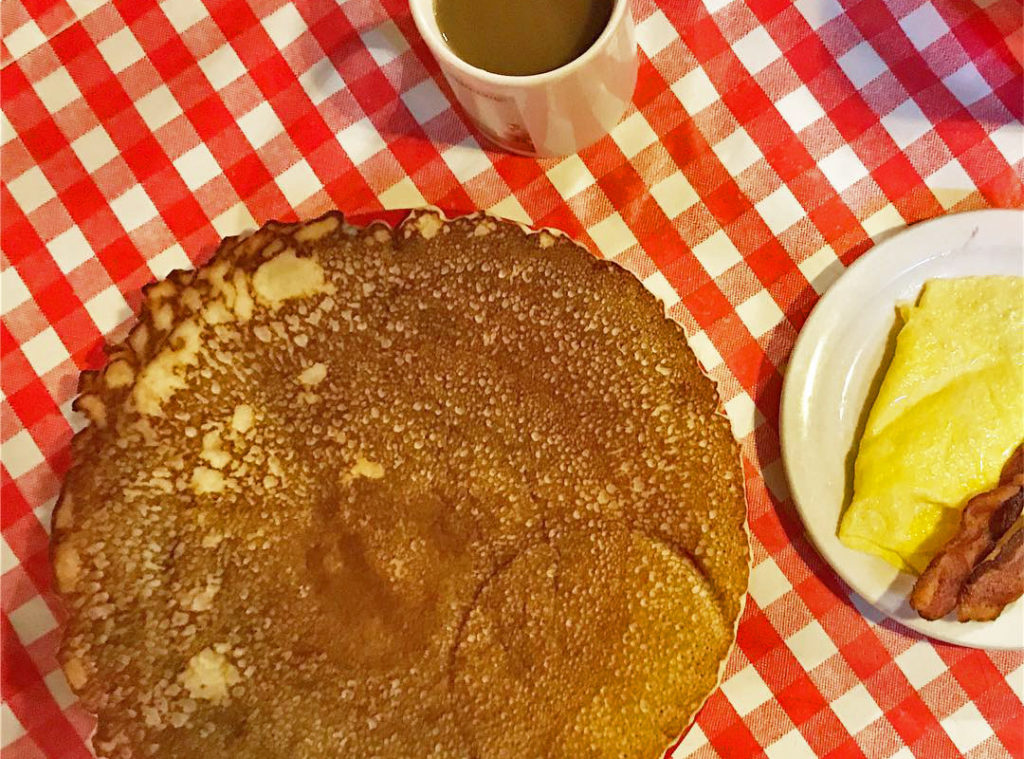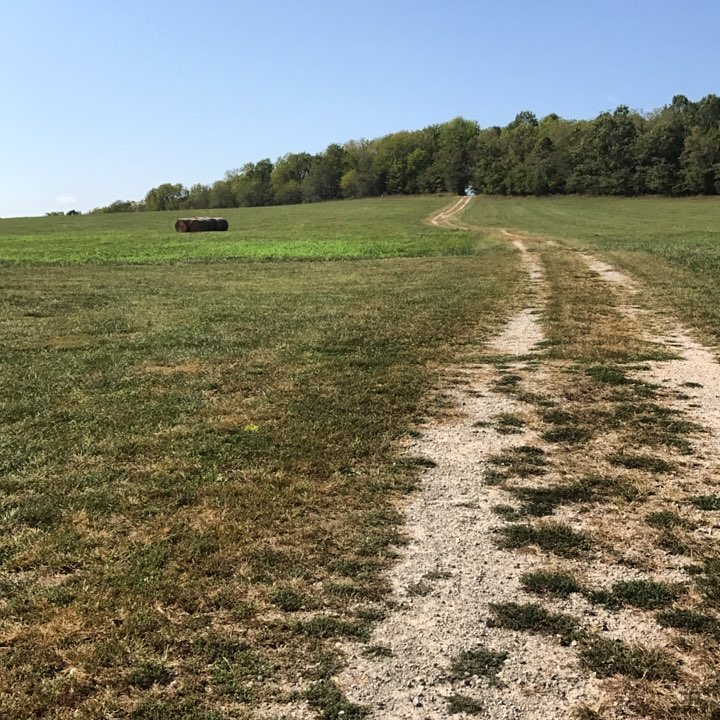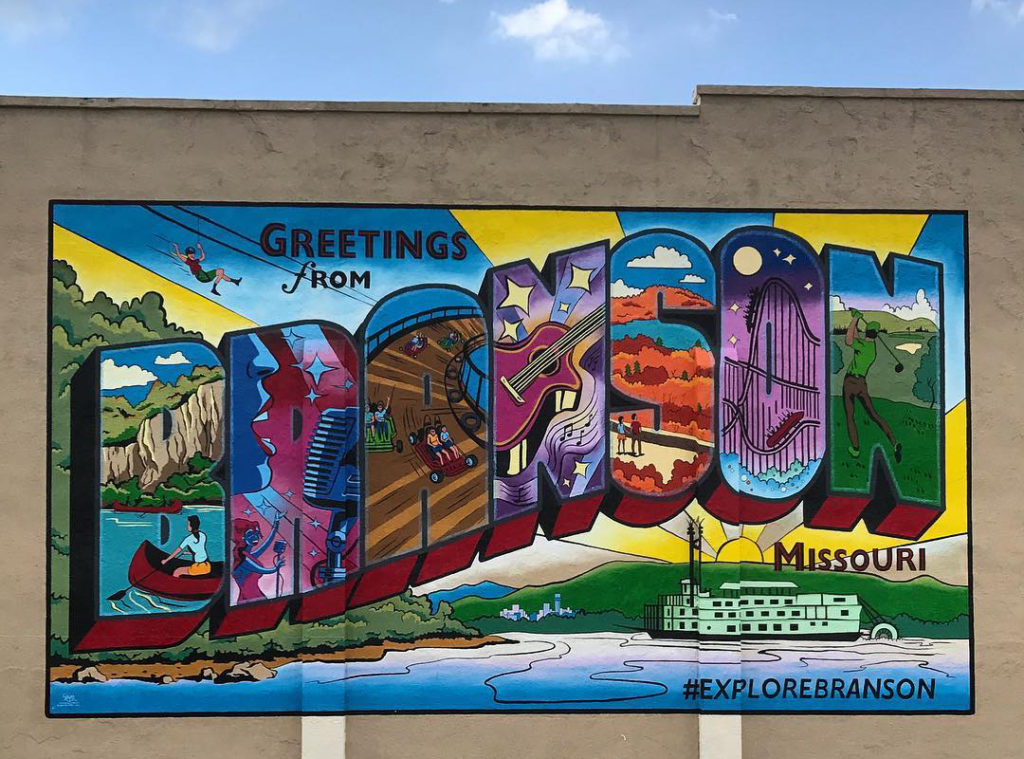At a production of “Moses” in Branson, Missouri, The Statesider’s Pam Mandel finds an unexpected plot twist in the familiar Passover story.
“Well, what are you doing all the way out…here? How’d you find this place?”
The question wasn’t fair. Billygail’s Cafe is only 10 miles outside Branson, Missouri. Sure, it’s on a country road, and sure, it feels like you’ve found something special, but it’s listed on TripAdvisor and USA Today and showed up on an episode Man vs. Food on the Travel Channel. Use Yelp to find breakfast while you’re in Branson and you’ll get Billygail’s.
The real question was not what I was doing at Billygail’s. The answer to that was easy: I was there to muscle my way through a gorgeous 14-inch plate-obscuring sourdough pancake. The bigger question was, what was I doing in Branson?

The short answer is I was in Branson for a conference and to see a place I’d never been before. There’s little I like more than going somewhere new and finding out I’m wrong about it — and for a writer, no surer way to find a great story. My previous exposure to Branson was limited to a 1996 episode of The Simpsons. Bart, Milhouse, Nelson, and Martin take a road trip, detouring through Branson to catch a performance by Nelson’s unlikely hero, Andy Williams. I didn’t buy the Simpson’s vision wholesale. I looked at Google, too, and found plenty of references to the show scene — and to country music. I’d baked extra time in my trip to explore — and to catch at least one country music show.
“Yeah, you could do that,” said the conference organizer who helped me plan my travel. “And yeah, there’s music here, but there’s this… other thing.” She pointed me to the website for Sight and Sound, a 2000 seat theater that stages multimedia spectacles based in the Bible. The current production? Moses.
A bad West coast Jew, I know little of my inherited theology. But like many of my Jewish friends and family, I know three or four things about the story of Moses — kind of the cornerstone story of the Jewish faith. Plus, Passover — the holiday where we eat matzoh ball soup and recount how Moses led “the chosen people” out of Egypt into the Promised Land — happens to be my favorite holiday. So, while Dolly’s Stampede is the most popular attraction in Branson, and there’s plenty of wholesome country western cabaret, I couldn’t resist this opulent retelling of the history of the Jewish people.
I landed in Springfield, a pleasant little city with old brick storefronts, some abandoned, some lively. There’s good coffee and righteous burgers, and as I was heading in for the night, I felt a twinge of regret for how tired I was — too tired to go hear the band that was unloading their gear in the parking lot behind my hotel. Springfield feels like a place where something might be about to happen; like it might end up being some kind of artist colony town, a Midwestern Marfa, Texas, or Bisbee, Arizona. Springfield calls itself the official birthplace of Route 66, a blue highway with Chicago, Illinois, at one end and Santa Monica, California at the other. I pined for the open road, but that would have to be another time, another trip. I needed to head south, to Branson.
What was I doing in Branson, Missouri? There’s little I like more than going somewhere new and finding out I’m wrong about it — and for a writer, no surer way to find a great story.
My first morning in Missouri I had breakfast with a Jewish historian. We both ordered crispy bacon with our eggs, and both laughed about that. She suggested I take a detour past the Jewish cemetery, just to see it, to note its size. “It will take you ten minutes,” she said. Hey, I had ten minutes. Plus, I have taken to examining how Jewish life fits into places that are unlike my liberal enclave in Seattle.
At the cemetery, it was hot under the high clouds even though it was still very early in the day. I wandered the rows of quiet formal stones, read the familiar names, nodded my respects to the Rosenbergs and Goldsteins and Feldbaums past.
My next stop was Wilson’s Creek Battlefield. One of the earliest battles of the Civil War took place here. I sat in the historic site’s movie theater alone watching the National Park Service video. I love these movies, the obvious costumes, the dramatic voice overs, and I will always take the time to sit through a park presentation. Yes, I smirked at the bad costumes, but I was also genuinely affected by the suffering, the loss of life from the battle that took place here. I was confused about the story, though; it seemed like one of the generals had switched sides, so after the movie, I stopped to talk with the park docent. He was a cheerful retiree; the desk in front of him was covered with library books about the Civil War.
“Yeah, Missouri is confused,” he explained. “Completely checkerboard. You could go from a Union county to a Confederate one, all across the state. They couldn’t make up their minds. It’s still kind of confused,” he confided in me. He was, he wanted me to know, from Texas.

You visit the battlefield via a circular road — interpretive signs tell you what happened at each place. I saw two other cars, a runner, and a guy on a bicycle. Most of the time I was alone, reading, listening to the crickets, watching the wind sweep through the high grass. Among other things, the Missouri Compromise meant the state would fight on the Union side, but they got to keep their slaves, who benefited from said compromise not at all. I walked past a rusting cannon. Spiders had built webs between the wooden spokes on the wheels. My fist fit in the barrel. The damage caused when a ball hit you was unthinkable. If it hadn’t killed you, surely you wished it had.
The Confederates won the battle, but paid with more than 1200 lives. The Union fared slightly worse; they lost over 1300 men. But if you were a human who was considered property in Missouri, it probably didn’t matter to you who won. You were still enslaved.
I made my way further south via the rolling backroads of the Ozarks. The two-lane highways were gorgeous driving; rolling hills, little towns with brick town halls, the distinctive rock formations of the mountains themselves. The sky was huge. A church reader board — those signs with the plastic letters on them — towered over an intersection:
“Plan ahead, hell is crowded and heaven requires reservations.”
I thought about this for the rest of my drive. Heaven seems sort of fussy, I thought. I imagined Hell as a velvet-roped-off club you had to stand in line to enter, too cold in your party dress, a bouncer checking your ID at the door.
“You’re not dead yet,” the bouncer would say, and throw me out of line.

At last I arrived at Branson, which turns out to be more a vacation idea than a centralized place. I’d expected the concentration of Vegas or Reno, hotel towers, a lively strip. I was wrong. The town feels like any Midwestern suburb that’s lost its center — sprawling arterials, strip malls, some low rise motels with neon signs. Old Branson is a few blocks of quaint souvenir stores and fudge purveyors and diners. There’s a newer open-air shopping mall on an arm of Lake Taneycomo where you’ll find a Buffalo Wild Wings and a Famous Footwear and a massive Bass Pro Shop.
Branson was founded in the 1880s, but a century later, in the 1980s, it reinvented itself as a tourism and live entertainment destination. Dolly Parton has the Stampede here, an attraction that invites you to “thrill to a friendly North-South competition,” a very flexible interpretation of the Civil War. Entertainment billboards loom over the interstate advertising Baldknobbers and The Dutton Family and The Haygoods, all country revues. I did not know who any of these people were. Smiling from atop a reader board that advertises the Chinese Acrobats who perform in his namesake theater is a giant Yaakov Smirnoff — the Russian-American comedian who made Missouri his home. There are lakefront resorts like Big Cedar Lodge, a luxury compound that looks like a Bass Pro catalog. (It’s owned by the same company.) Before the road drops down into the resort, you drive under a sign that says “Welcome to Paradise” — and indeed, it is lovely to be on the manicured grounds watching the sun turn the thunderstorm skies red. There are other lakefront resorts, paint peeling from signs advertising boat rentals and bait and cable TV. They look like the places in Ozark, the TV show, appealing in a rough sort of way. Or maybe not.
I arrived in town mid-afternoon and hungry. It was a Monday and many of the businesses on the bypass route I’d driven from Springfield were closed. By contrast, Branson proper was hopping. I was too hungry to wait for breakfast all day, or for the all-you-can-eat buffet, places that were packed to bursting at two in the afternoon. I peered into several American diners, waiting areas filled with gray-haired heads, a long wait on each signup sheet. Then I found a Greek place, where I had a very respectable falafel, a giant pink lemonade and, most critically, no wait. I got baklava to go.
Fueled, I walked through old downtown again, past the five-and-dime store, past the shop advertising “concealed carry clothing,” past the pink and purple boutique and shops selling flag-emblazoned t-shirts. It didn’t take me long to realize I was not Branson’s typical visitor. I was alone, for starters; I did not spot one other solo traveler. At a few years past 50, I was noticeably younger than everyone on Main Street. And the ichthys fish symbols representing Jesus prominently displayed on the pie shop and the hardware stores and other establishments where I wouldn’t think religion would play a role made me think that Branson wasn’t exactly a good place to, say, seek out a kosher deli. How this place was going to stage a convincing Jews’ Exodus from Egypt story was beyond me, but I was open to the idea.
I got to the show way too early and lurked about the lobby while scrutinizing the gift shop items — branded kitsch and CDs of prior productions, plus a prayer shawl, white with glittery blue thread and that same ichthys fish embroidered on it. A group of severely dressed women with long hair stood in front of the towering Moses statue in the lobby and smiled for a photo. I bought a cup of weak coffee and a package of M&Ms and waited for the doors to open.
I kind of loved the show. I appreciated the over-the-top effects, the magnificent sets and the operatic vocals. I shrugged off the bits I didn’t love — the hokey humor, the cartoony interludes. It’s a family show; I figured that was meant to appeal to kids. Whatever. I remarked on the geographically inaccurate presence of a llama and a long-horned Shetland cow on the Egypt set, but again, whatever. I gawked when the Angel of Death swooped through the middle of the theater from behind me. My arms broke out in goose bumps when the Moses solos filled the hall with rich notes. I shook my head in wonder and genuine delight when the desert village occupied not just the main stage, but wrapped 180 degrees around the seated audience. Horse-drawn chariots and goats and crowds of refugee Israelites poured into the aisles of the theater. I was swept up in the spectacle, a willing participant in the story for most of the production. Most of it.
The Moses production ends with God telling Moses not to be worried about the flaws of his people. ‘I got you,’ God basically says, ‘I’m sending you my son.’
Not everything has to be for me, I get that. Once, I went on a “snorkel tour” in Cancun where everyone was issued a tiny speedboat. I get that there are people who think it’s fun tearing through the mangroves under a hot blue sky; I wanted to be in the water looking at fish. Another time I stayed in a small German lodge; everywhere you turned was another annoyed looking taxidermied animal. It gave me the creeps, but I guess there are people who like to see preserved game. More recently, I ate in a packed American-style Basque restaurant. It was the worst meal I’ve had in decades, yet the place was bursting with smiling happy diners. Okay. People like different things. I get that.
The Moses production ends with God telling Moses not to be worried about the flaws of his people. “I got you,” God basically says, “I’m sending you my son.” A golden light fills the center of the stage and there is Jesus. Children rush to his side as he turns to face the audience, his face pale, his locks flowing for all the world, like he walked out of an illustrated Bible Stories book.
That is not how the story goes, I thought, as I fled the theater. My dad would be beside himself with anger. My father — the son of Bronx Jews — died a few years back, but he was surely with me in the passenger’s seat as I drove Branson’s four lane arterials back to my hotel.
Branson is not for me, I thought as I stuffed myself on the baklava I was delighted to rediscover in my hotel room. I’d overheard more than one person say they liked Branson because it was “like Vegas, without the sin.” In that moment, I wanted the sin of liquor, but the hotel bar was closed. Sugar would have to do. The syrup from the baklava had leaked out of the package, all over the inside of my bag. I washed it in the sink while trying to process that I’d just seen an over-the-top theater production telling me God had sent Jesus to save the Jews from themselves. From ourselves.
The pancakes at Billygail’s are excellent and the staff will not give you the stink-eye if you ask for extra crispy bacon. If you are a small group, you may be seated — as I was — with retired RVers from Arkansas and Colorado Springs. They will greet you with vague suspicion and ask you what on earth you are doing “out here” on this country highway, in this diner, alone.
I told them the truth. I was in Branson for a conference, and like them, at Billygail’s for the pancakes. We talked about travel and Branson and the shows we’d seen.
“Ah, you saw Moses! We’ve got tickets! Did you like it?”
“It’s a spectacular production,” I said, not lying. “I think you’ll enjoy it.”
This story originally appeared in Longreads
Want more? Right this way to a selection of Statesider feature stories.
